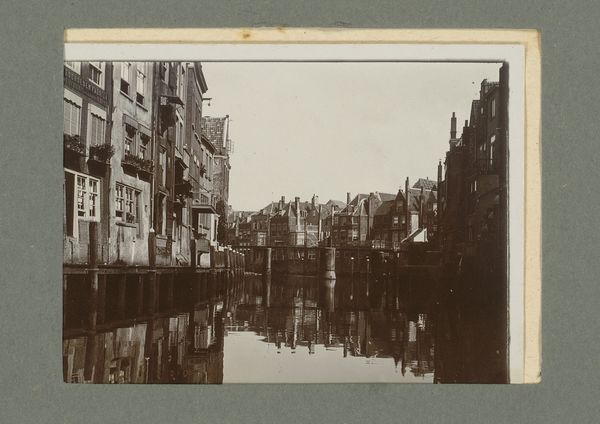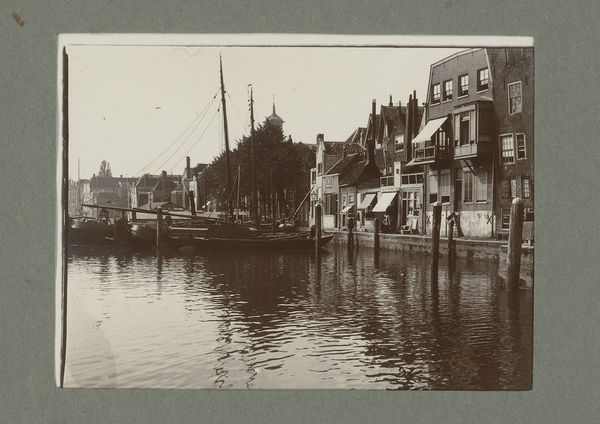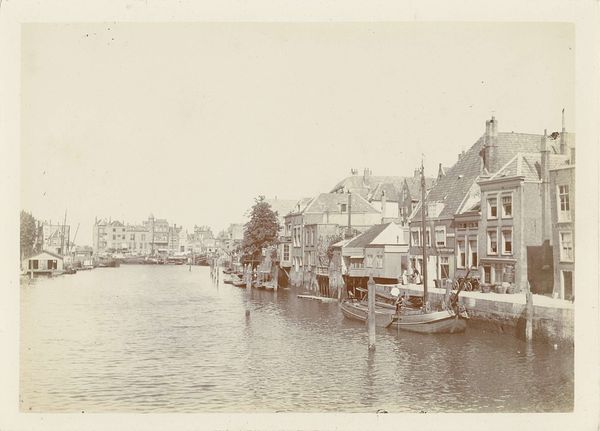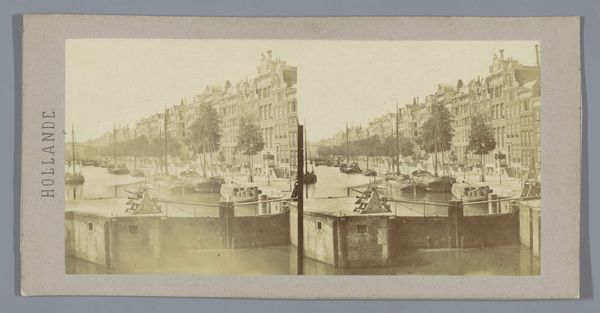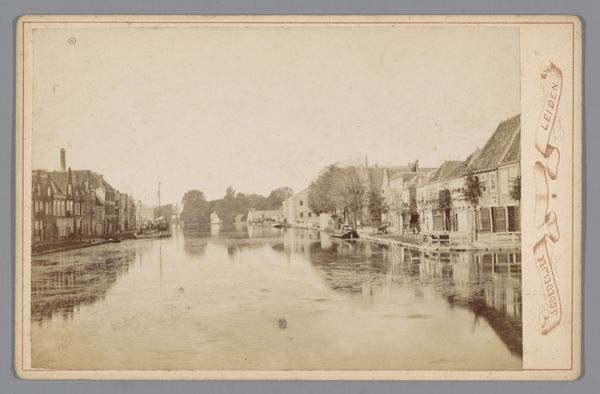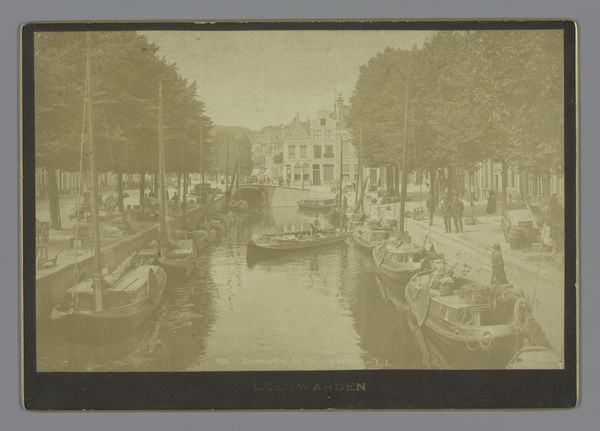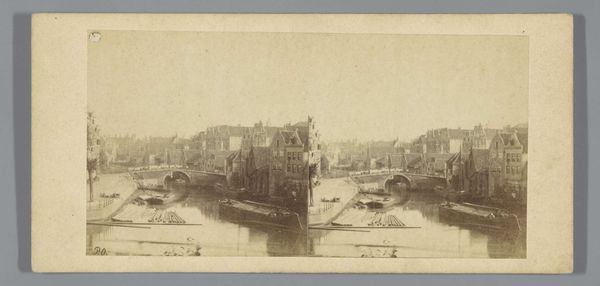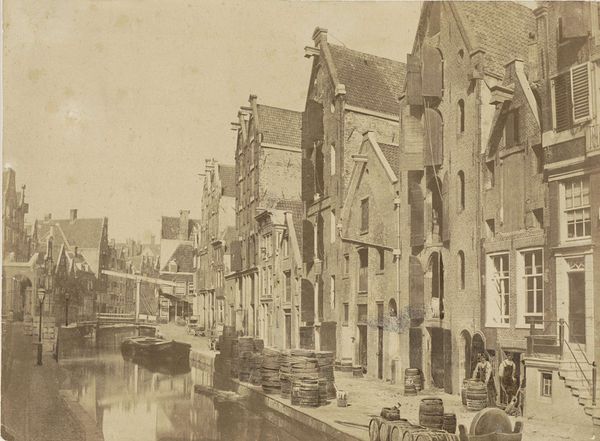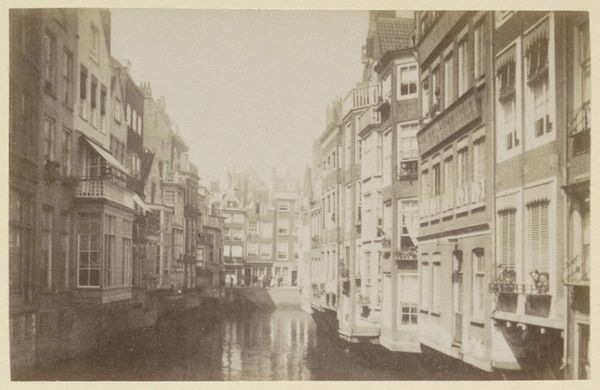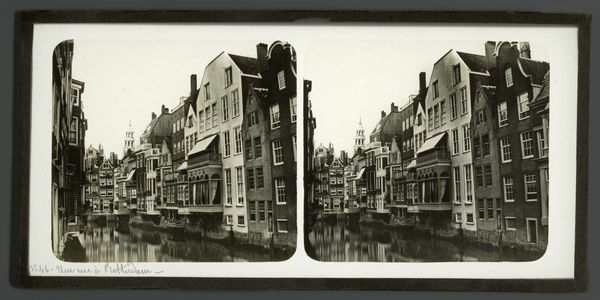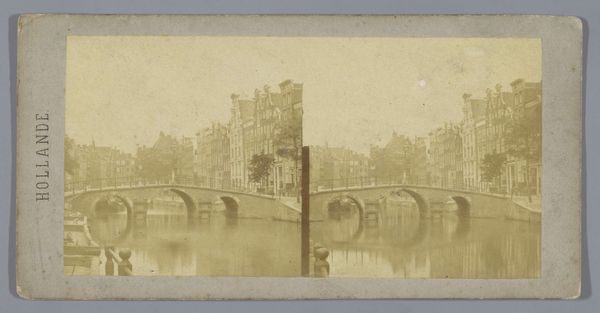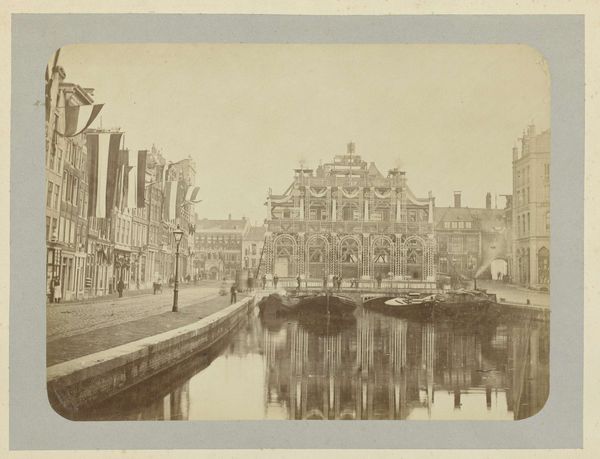
Gezicht op de Wijnhaven in Dordrecht met de Nieuwbrug en de Groothoofdspoort op de achtergrond 1858
0:00
0:00
photography
#
landscape
#
photography
#
cityscape
#
realism
Dimensions: height 84 mm, width 162 mm
Copyright: Rijks Museum: Open Domain
Curator: The still quality of this cityscape strikes me first, a certain timelessness. The monochrome palette gives it an aged feeling, yet there's clear human activity present with those docked boats. Editor: Indeed. What you’re observing is “View of the Wijnhaven in Dordrecht with the Nieuwbrug and the Groothoofdspoort in the Background," taken in 1858 by Charles-Henri Plaut. It's a striking example of early photography capturing Dutch city life. Notice how it captures a moment that is simultaneously grand, with the scale of the buildings, and intimate, revealing daily life along the canal. Curator: Those reflections in the water are what catch my eye. It’s almost dreamlike, a softened reality. Water, of course, represents the unconscious, perhaps inviting us to reflect on our own internal landscapes through this scene. And Dordrecht itself would have stood for commerce and prosperity for many viewers. Editor: I find the framing particularly interesting. The architectural details tell us much about the urban development and civic pride of Dordrecht at that time. Those structures, reflecting their status within a wealthy and well-connected trade network, speak volumes about societal priorities. Note that this stereoscopic card was a popular method for distributing imagery. It's important to recognize the popular and commercial context that supported it. Curator: Commercial context, certainly, but the human element persists. The way the buildings crowd around the water’s edge – a symbiosis, almost, representing humanity and nature's interplay. The ships themselves look to me like dark birds, perched but ready to fly again, ready to begin anew. There's always an underlying possibility in these townscapes. Editor: That "possibility," as you say, is interwoven with a distinct sense of bourgeois respectability. Dordrecht was deeply involved in international trade. Photography like this both documented and perhaps actively promoted the social values that sustained such commerce. Curator: Perhaps. Still, viewing through the lens of memory and association, it’s about that deep connection between self and surroundings, no matter when or where we live. Editor: Absolutely. And considering the original viewers helps us to examine our own values today, reflected in these kinds of familiar images. Curator: Very insightful. The stillness, the detail, they all carry stories beyond the visible.
Comments
No comments
Be the first to comment and join the conversation on the ultimate creative platform.
